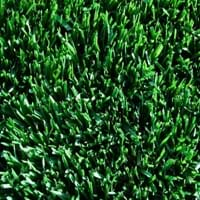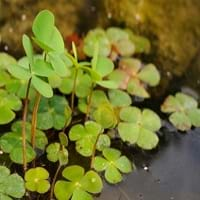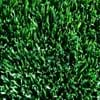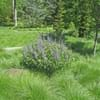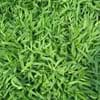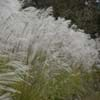Life Span
Perennial
Perennial
Origin
World/Pandemic, North America, Europe
Australia
Types
Alene, Barblue, Caliber, Canterbury
Marsilea quadrifolia, Marsilea hirsuta
Habitat
Cultivated Beds, Lawn, meadows
Bog Garden, Cultivated Beds
USDA Hardiness Zone
3-10
9-11
Sunset Zone
A1, A2, A3, 1a, 1b, 2a, 2b, 3a, 3b, 4, 5, 6, 7, 8, 9, 10, 11, 14, 15, 16, 17, 18, 19, 20, 21, 22, 23, 24
21,22
Habit
Mat-forming
Mat-forming
Minimum Width
Not Available
Flower Color
Purplish Green
Not Available
Flower Color Modifier
Bicolor
Not Available
Fruit Color
Not Available
Non Fruiting Plant
Leaf Color in Spring
Green, Blue Green, Gray Green
Green, Light Green
Leaf Color in Summer
Light Green
Green, Light Green
Leaf Color in Fall
Green, Blue Green, Gray Green
Green
Leaf Color in Winter
Green, Blue Green
Green
Leaf Shape
Narrowly linear
Four wedge-shaped leaflets
Plant Season
Spring, Summer, Fall
Spring, Summer, Fall, Winter
Sunlight
Full Sun, Partial Sun, Partial shade
Full Sun, Partial Sun
Type of Soil
Clay, Loam
Loam, Sand
The pH of Soil
Acidic, Neutral
Acidic, Neutral
Soil Drainage
Well drained
Poorly Drained
Bloom Time
Summer
Not Available
Tolerances
Not Available
Wet Site
Where to Plant?
Ground
Container, Ground, Pot
How to Plant?
Seedlings, Sod
Spores
Plant Maintenance
Medium
Medium
Watering Requirements
Water frequently while growing
Needs very little water
In Summer
Lots of watering
Lots of watering
In Spring
Moderate
Moderate
In Winter
Average Water
Average Water
Soil pH
Acidic, Neutral
Acidic, Neutral
Soil Type
Clay, Loam
Loam, Sand
Soil Drainage Capacity
Well drained
Poorly Drained
Sun Exposure
Full Sun, Partial Sun, Partial shade
Full Sun, Partial Sun
Pruning
Remove damaged leaves, Remove dead branches, Remove dead leaves
Remove damaged leaves, Remove dead branches, Remove dead leaves
Fertilizers
Nitrogen
Organic Manure
Pests and Diseases
Dollar spot, Rust, Summer Patch
Aphids, Clover Clot
Plant Tolerance
Drought
Drought
Flowers
Insignificant
None
Flower Petal Number
Single
Not Available
Fragrant Fruit
No
Not Available
Foliage Texture
Fine
Medium
Foliage Sheen
Matte
Matte
Invasive
Sometimes
Sometimes
Allergy
Cough, Itchy eyes, Runny nose
Beriberi, Toxic
Aesthetic Uses
Ground Cover
Ground Cover
Beauty Benefits
Not Available
Not Available
Environmental Uses
Erosion control
Fixes Nitrogen
Medicinal Uses
Not Available
Astringent
Part of Plant Used
Leaves
Seeds, Spores
Other Uses
Used in lawns and turf
Used like flour, Used to make dough
Used As Indoor Plant
No
Yes
Used As Outdoor Plant
Yes
Yes
Garden Design
Lawns and Turf
Container, Houseplant, Tropical, Water Gardens
Botanical Name
POA pratensis
MARSILEA drummondii
Common Name
Kentucky Bluegrass
Common Nardoo, Pepperwort, Water Clover
In Hindi
Kentucky Bluegrass
Water Clover
In German
Kentucky Bluegrass
Wasser Klee
In French
Kentucky Bluegrass
Eau Clover
In Spanish
Pasto azul de Kentucky
Agua trébol
In Greek
Κεντάκυ Bluegrass
νερό Clover
In Portuguese
Kentucky Bluegrass
Clover água
In Polish
Wiechlina
Woda Clover
In Latin
Kentucky Bluegrass
Trifolium aqua
Phylum
Magnoliophyta
Pteridophyta
Class
Liliopsida
Filicopsida
Order
Cyperales
Hydropteridales
Family
Poaceae
Marsileaceae
Clade
Angiosperms, Commelinids, Monocots
Not Available
Tribe
Poeae
Not Available
Subfamily
Pooideae
Not Available
Number of Species
Not Available
Difference Between Kentucky Bluegrass and Water Clover
If you are confused whether Kentucky Bluegrass or Water Clover are same, here are some features about those plants to help you choose better. Many people think that these two plants have the same characteristics, but one can see Kentucky Bluegrass and Water Clover Information and learn more about it. Fertilizers required for proper growth of Kentucky Bluegrass are Nitrogen, whereas for Water Clover fertilizers required are Organic Manure. Hence, one should know the basic difference between Kentucky Bluegrass and Water Clover if you are planning to have them in your garden to enhance its beauty.
<
Flowering PlantsImportance of Kentucky Bluegrass and Water Clover
Want to have the most appropriate plant for your garden? You might want to know the importance of Kentucky Bluegrass and Water Clover. Basically, these two plants vary in many aspects. Compare Kentucky Bluegrass and Water Clover as they differ in many characteristics such as their life, care, benefits, facts, etc. Every gardener must at least have the slightest clue about the plants he wants to plant in his garden. Compare their benefits, which differ in many ways like facts and uses. The medicinal use of Kentucky Bluegrass is Not Available whereas of Water Clover is Astringent. Kentucky Bluegrass has beauty benefits as follows: Not Available while Water Clover has beauty benefits as follows: Not Available.
Compare Facts of Kentucky Bluegrass vs Water Clover
How to choose the best garden plant for your garden depending upon its facts? Here garden plant comparison will help you to solve this query. Compare the facts of Kentucky Bluegrass vs Water Clover and know which one to choose. As garden plants have benefits and other uses, allergy is also a major drawback of plants for some people. Allergic reactions of Kentucky Bluegrass are Cough, Itchy eyes and Runny nose whereas of Water Clover have Beriberi and Toxic respectively. Having a fruit bearing plant in your garden can be a plus point of your garden. Kentucky Bluegrass has no showy fruits and Water Clover has no showy fruits. Also Kentucky Bluegrass is not flowering and Water Clover is not flowering . You can compare Kentucky Bluegrass and Water Clover facts and facts of other plants too.
